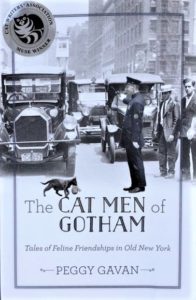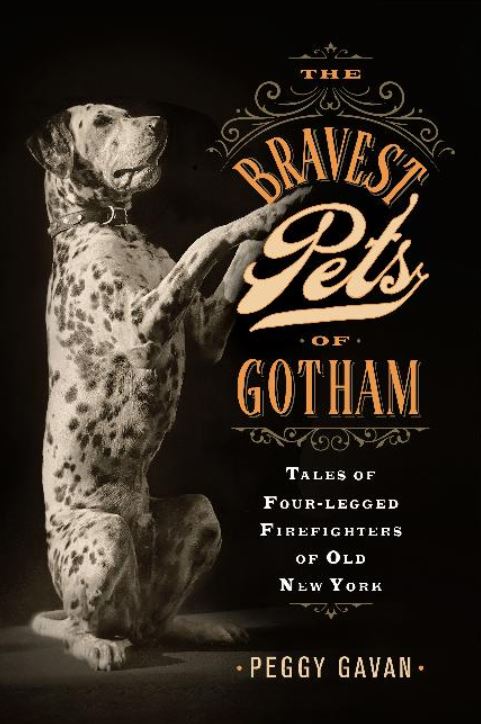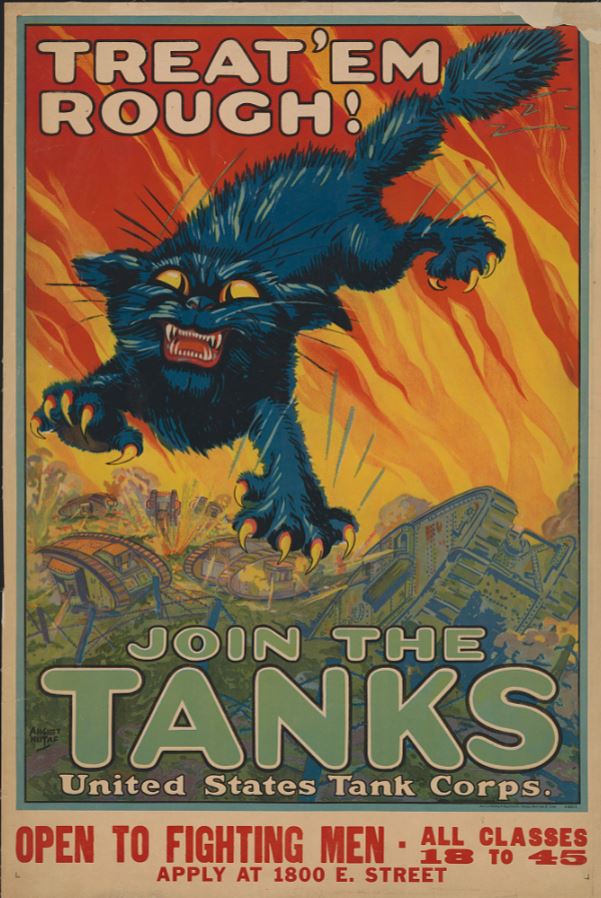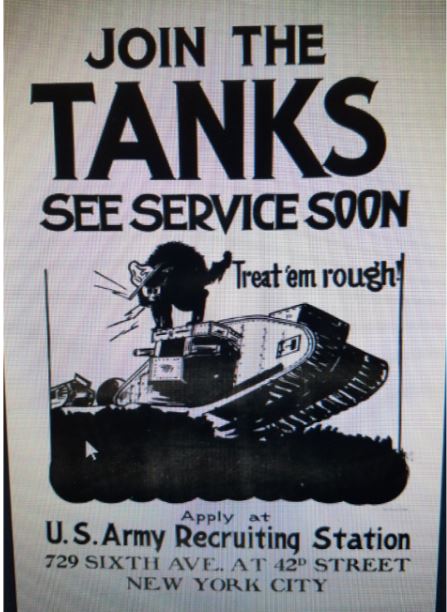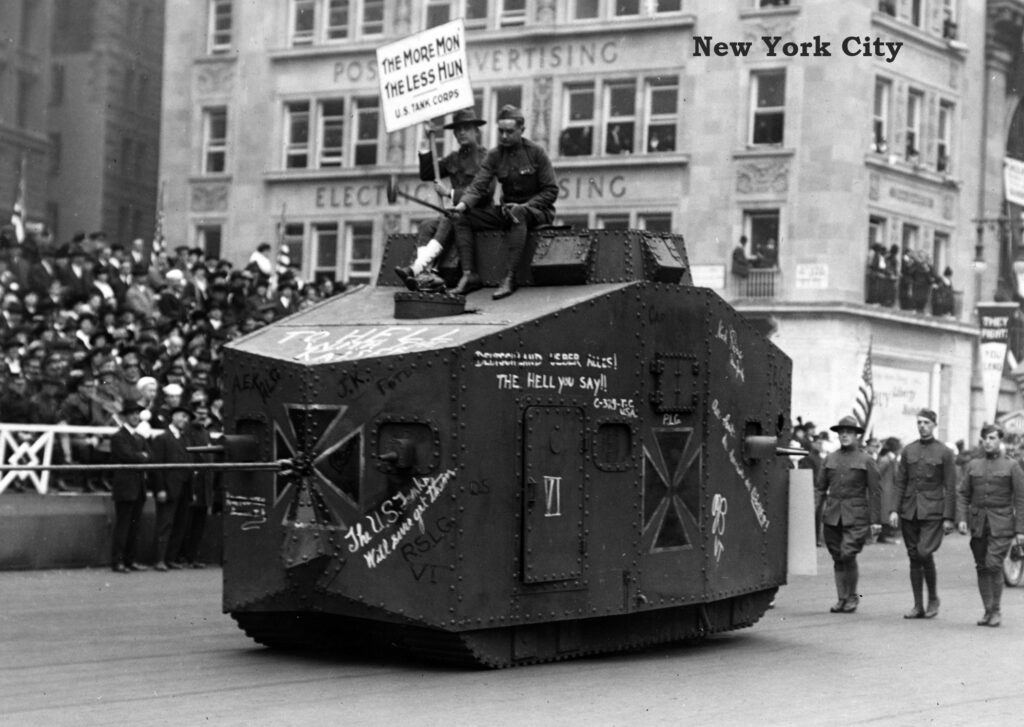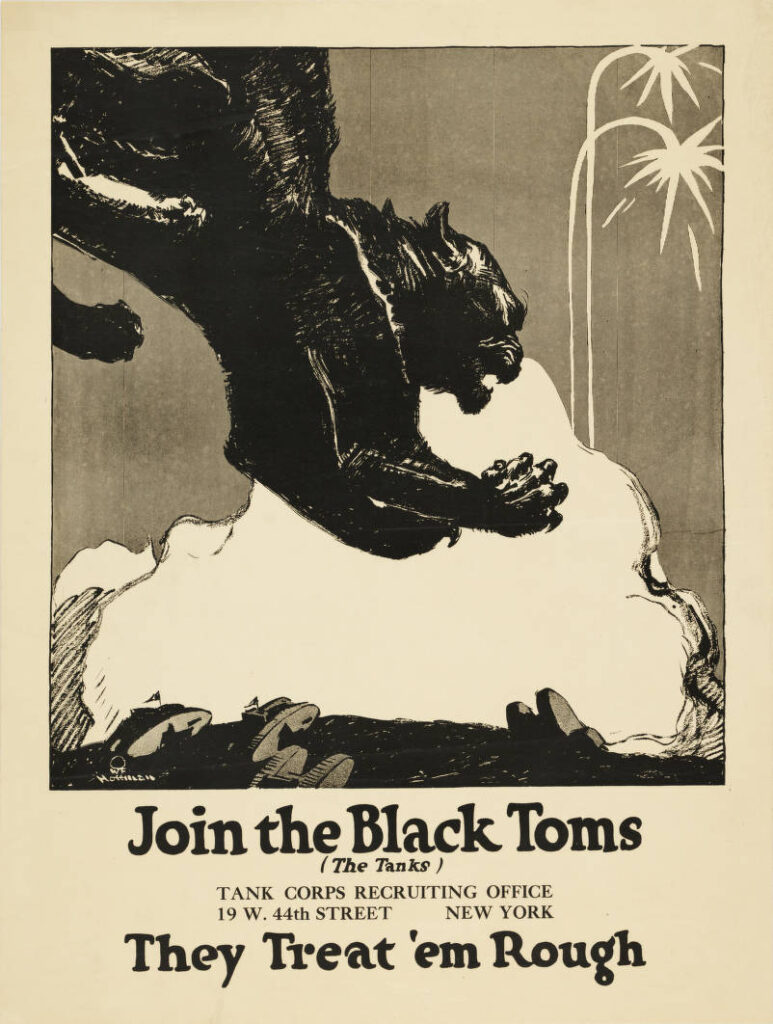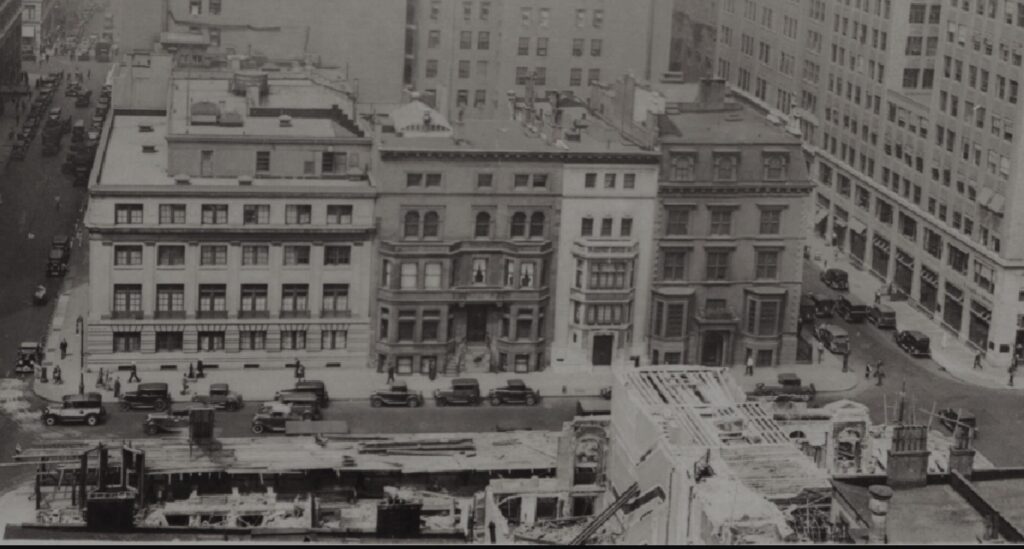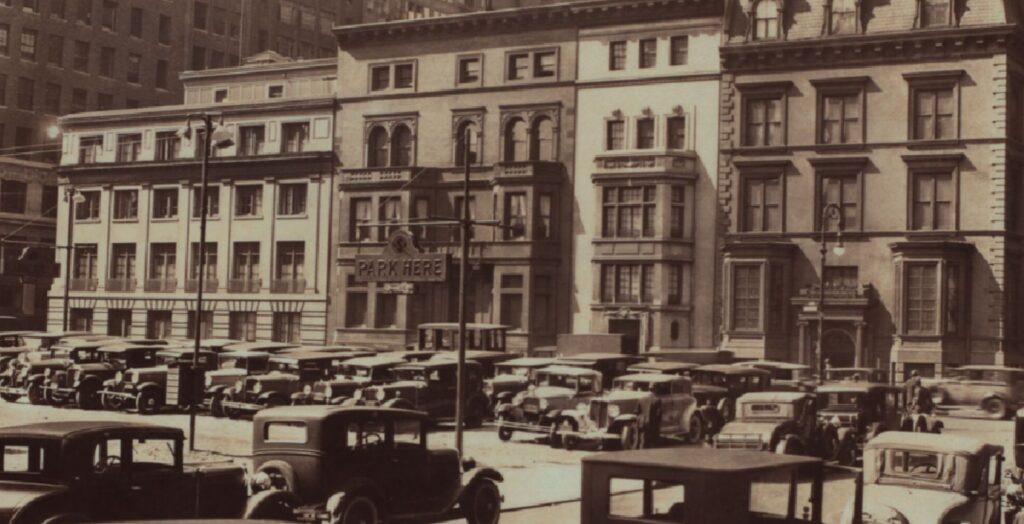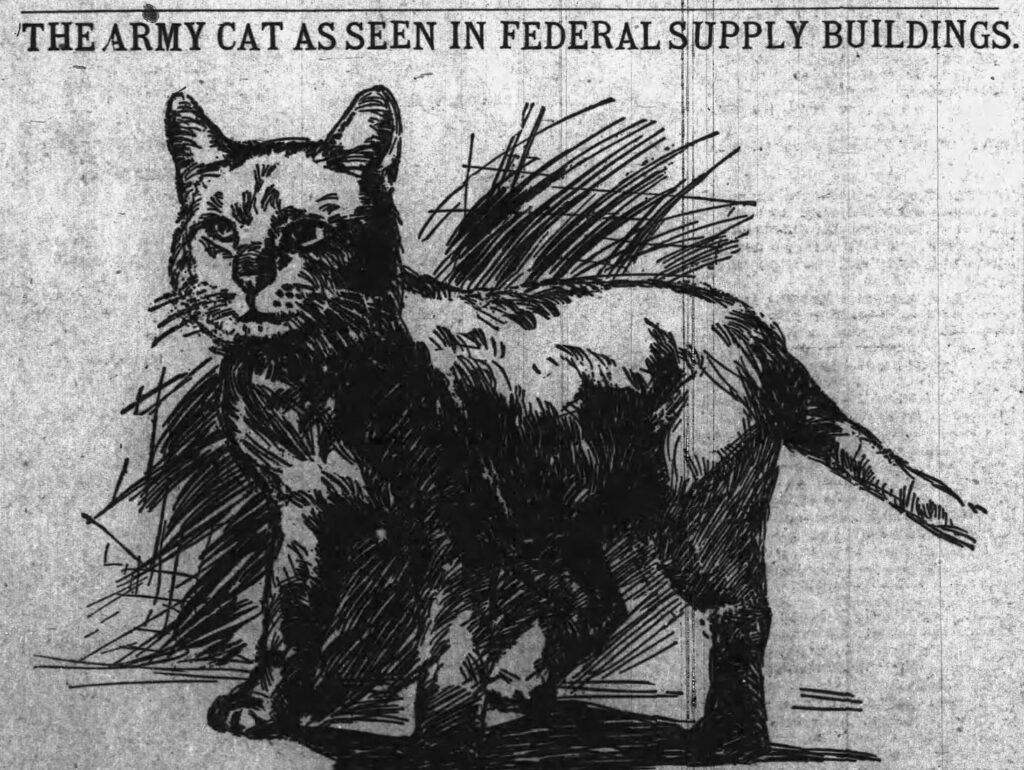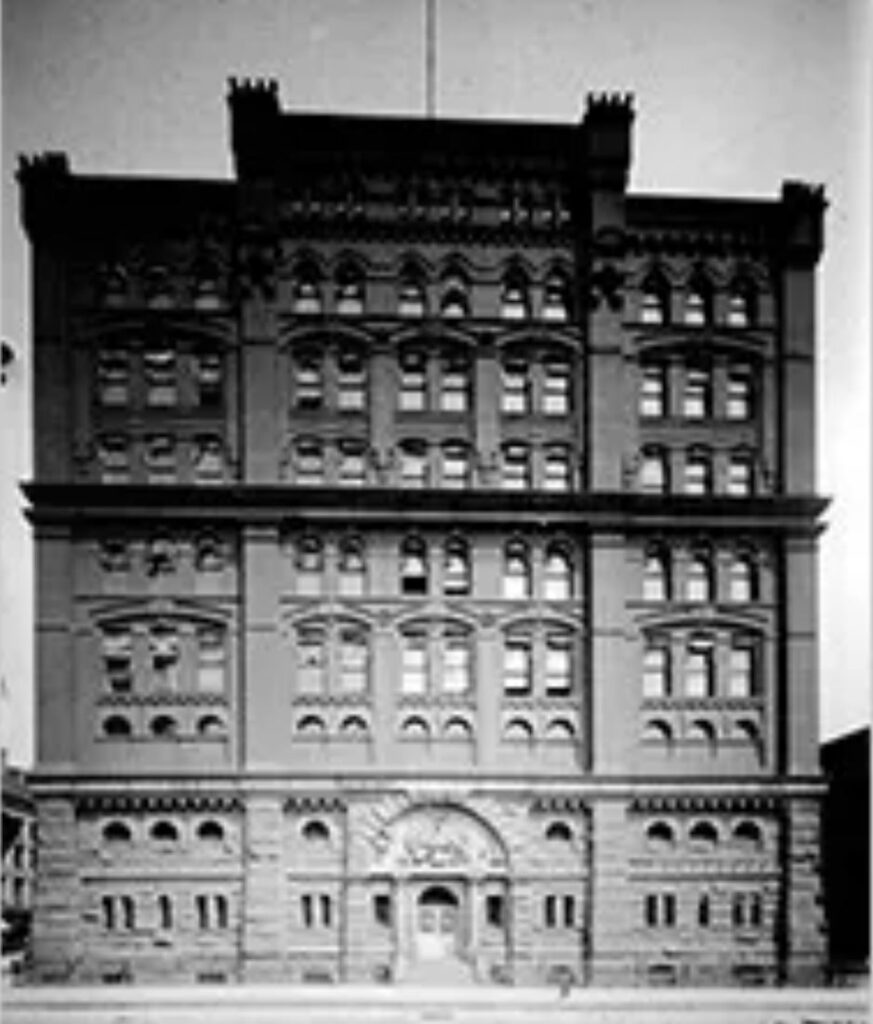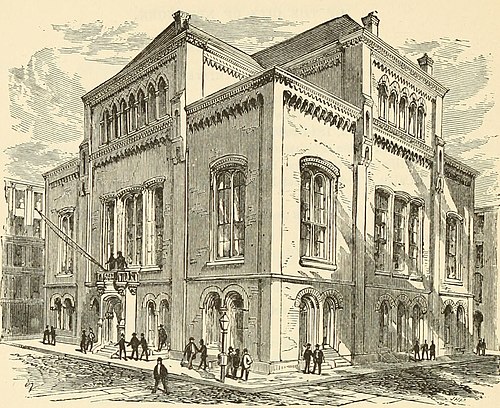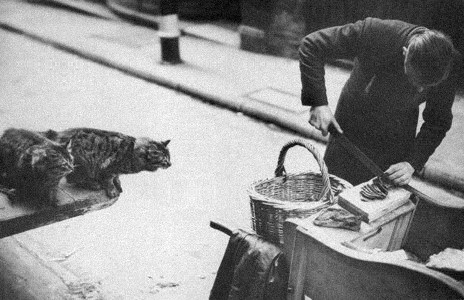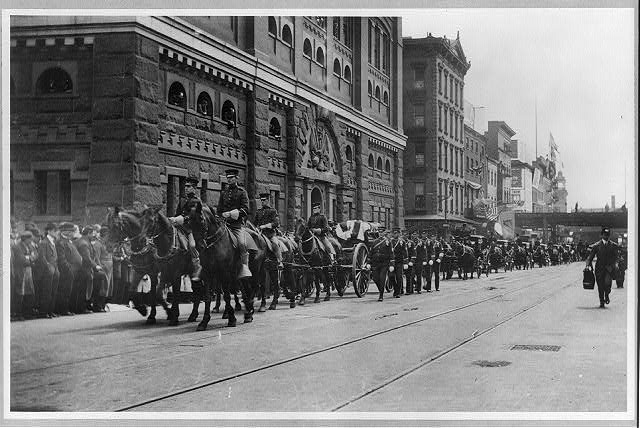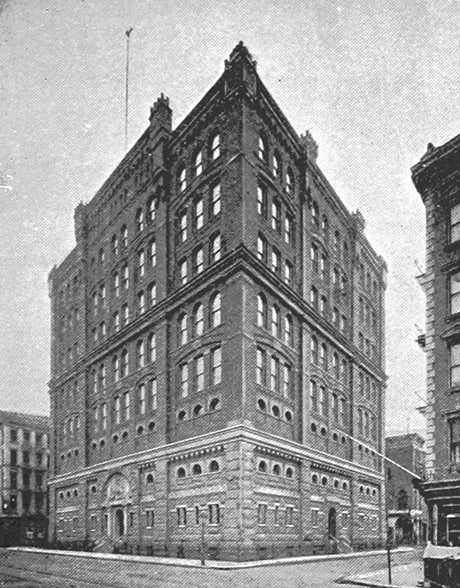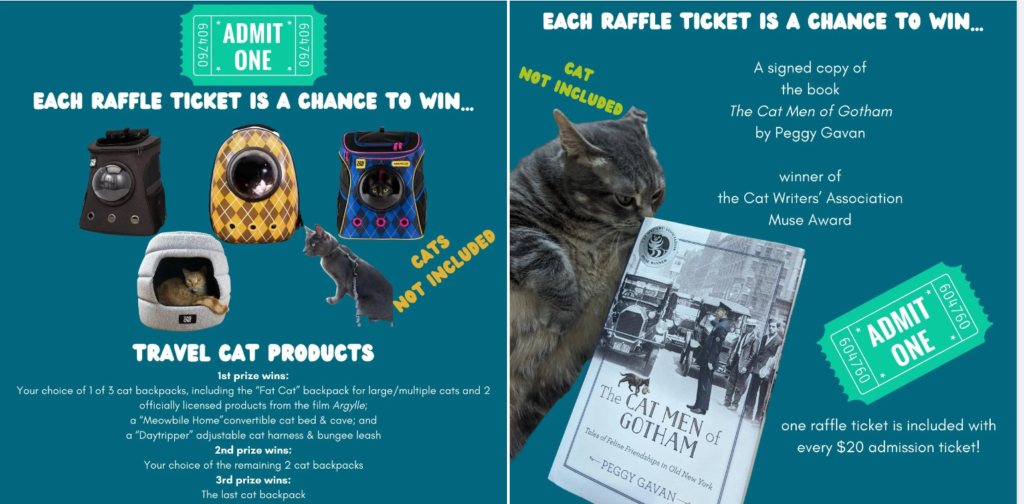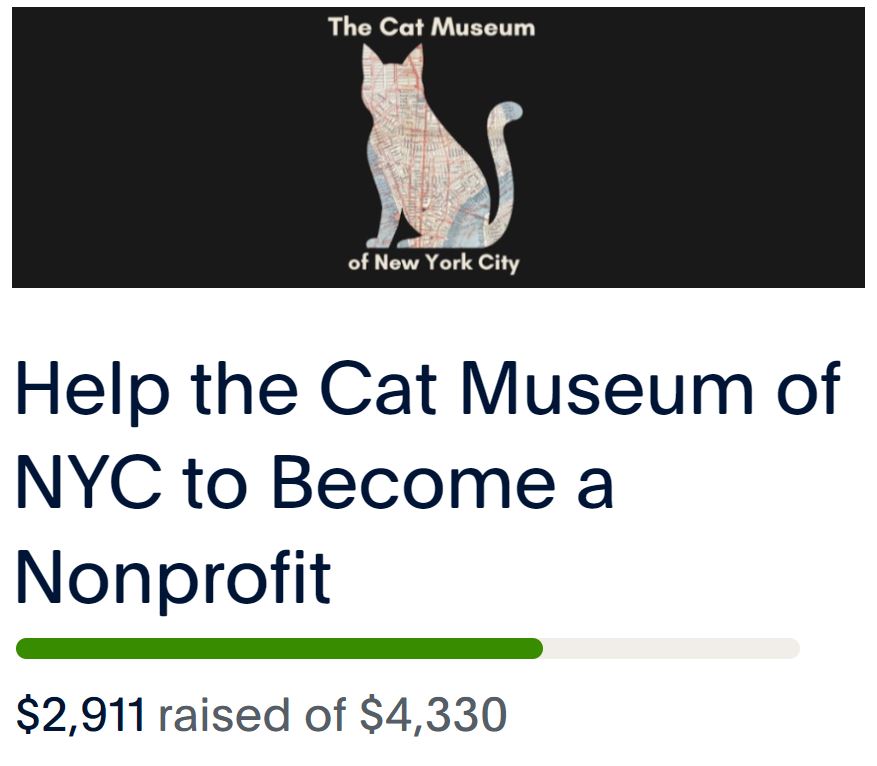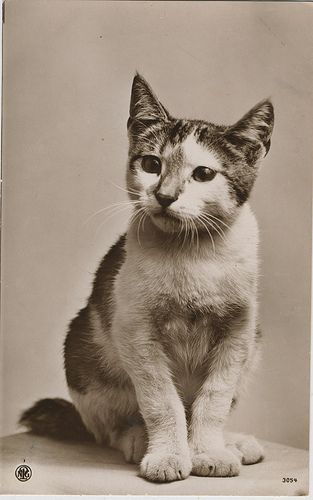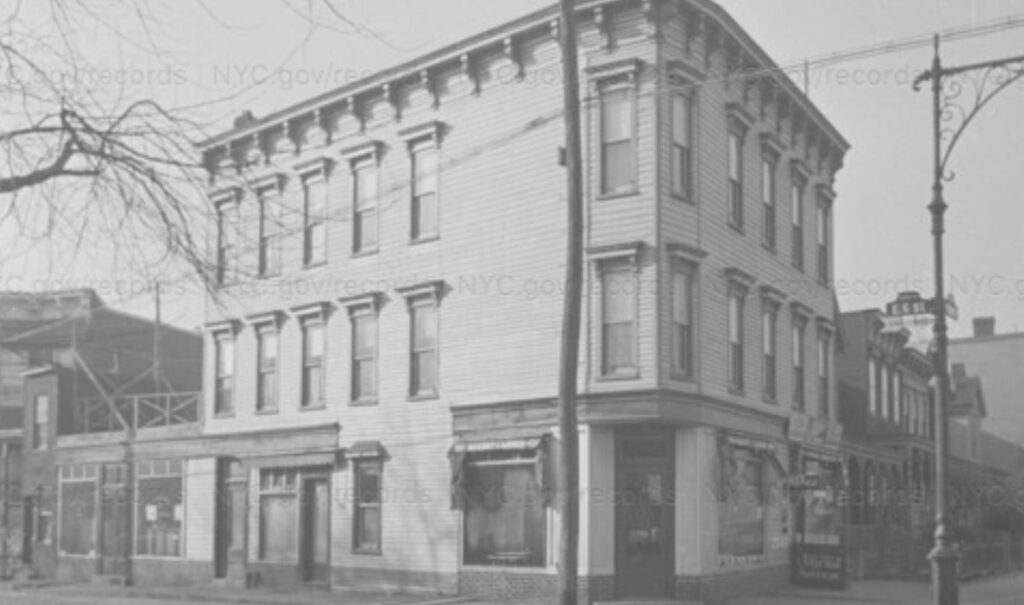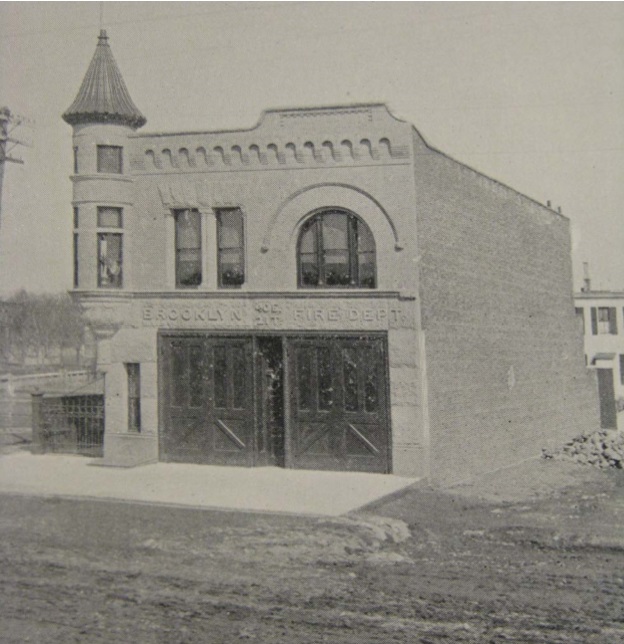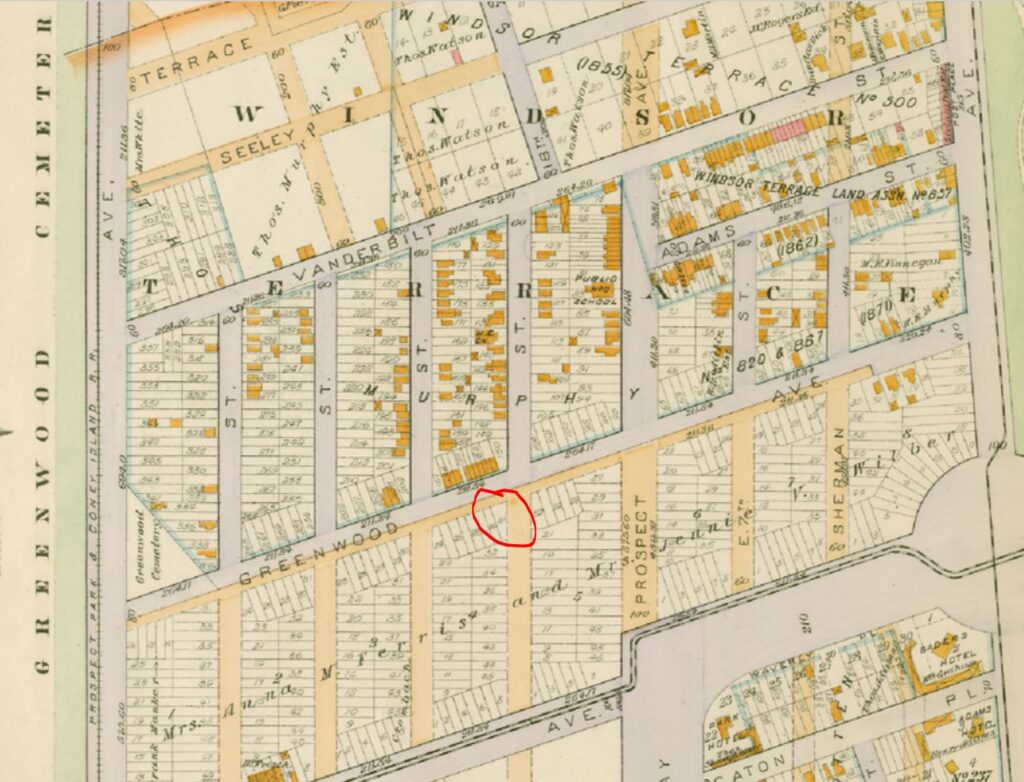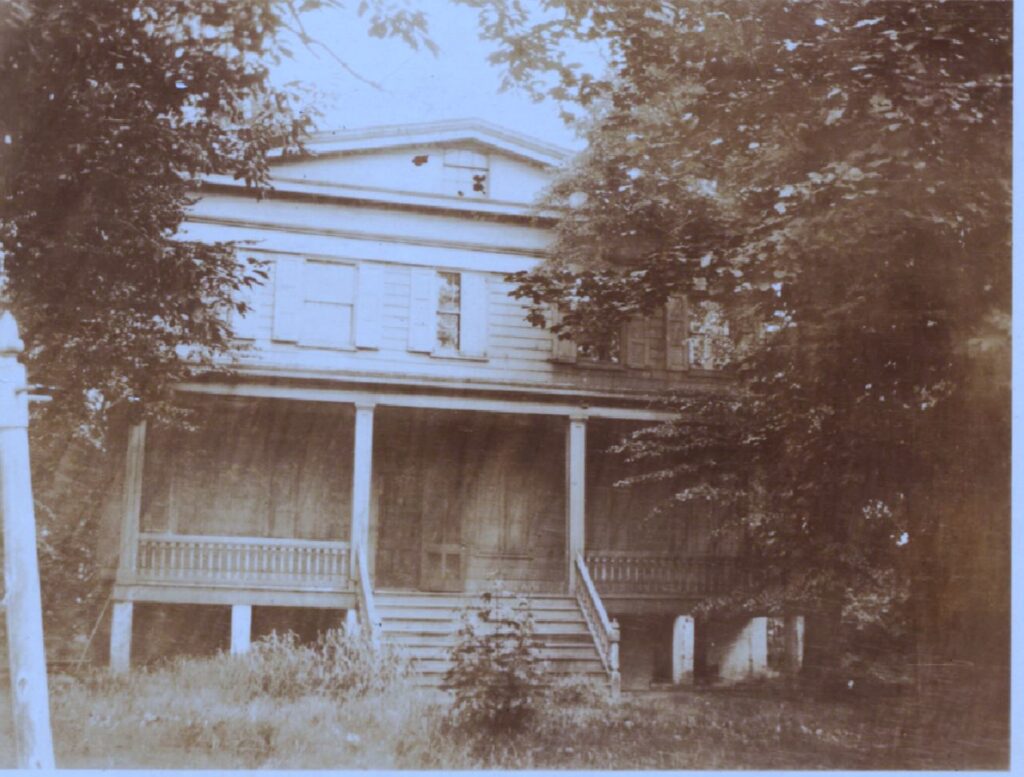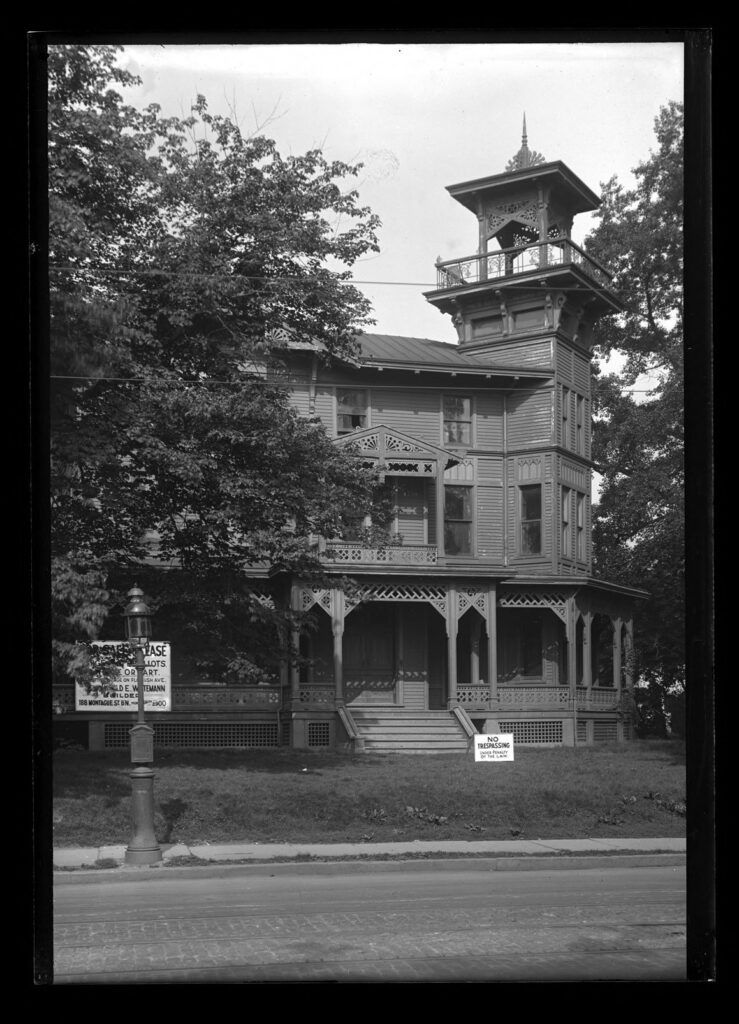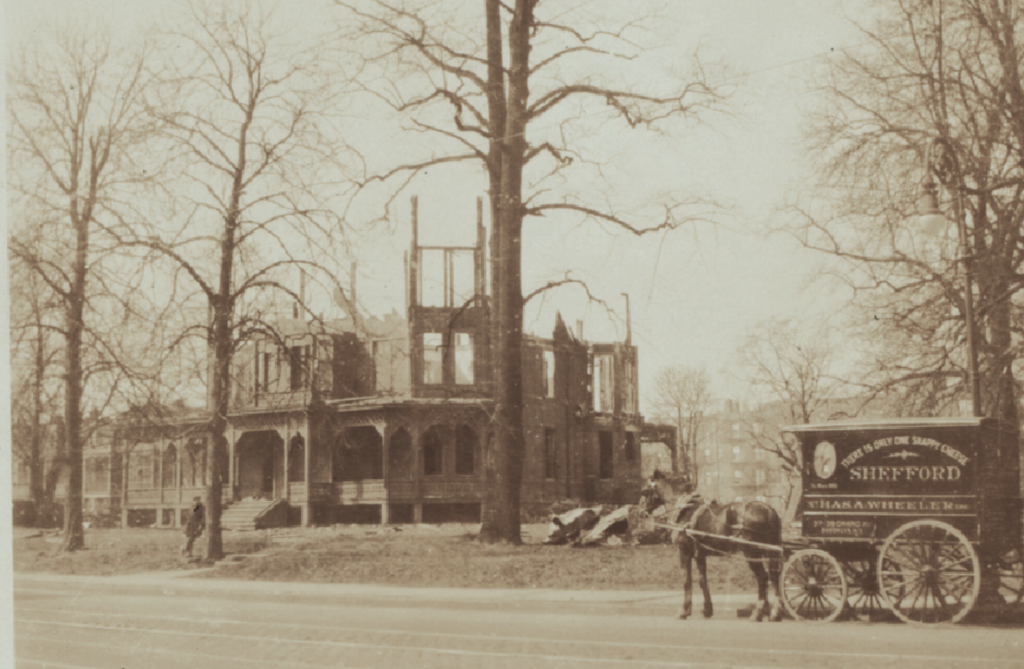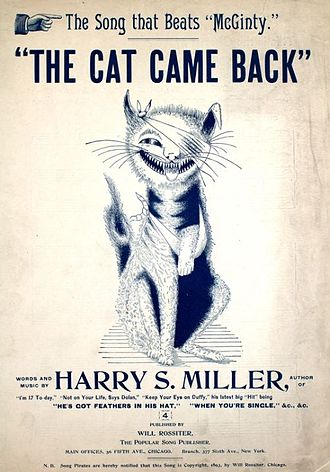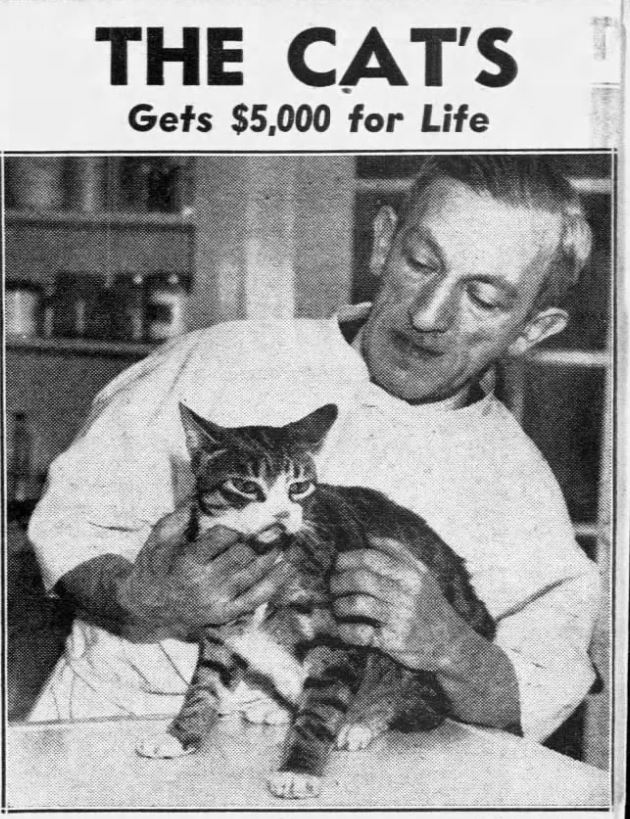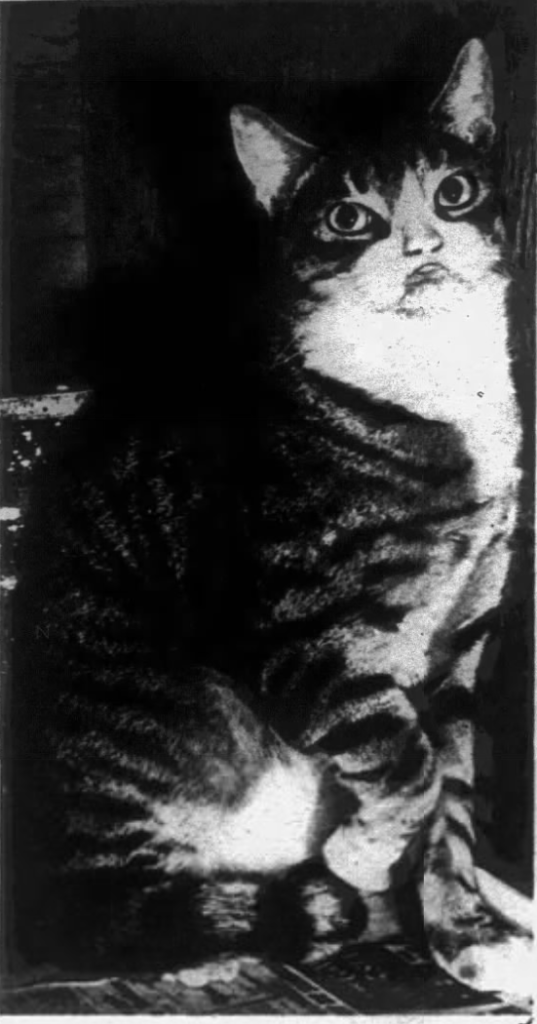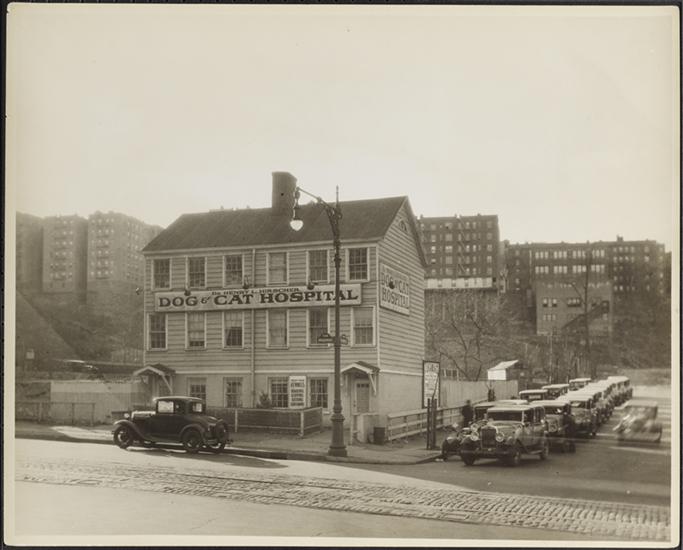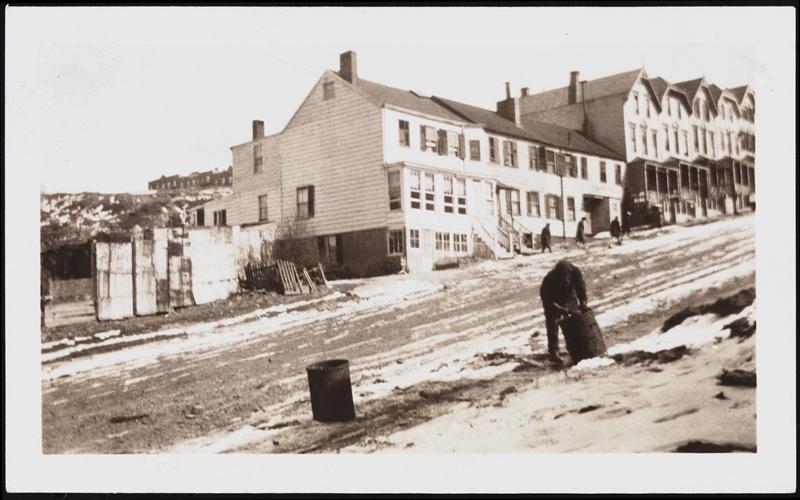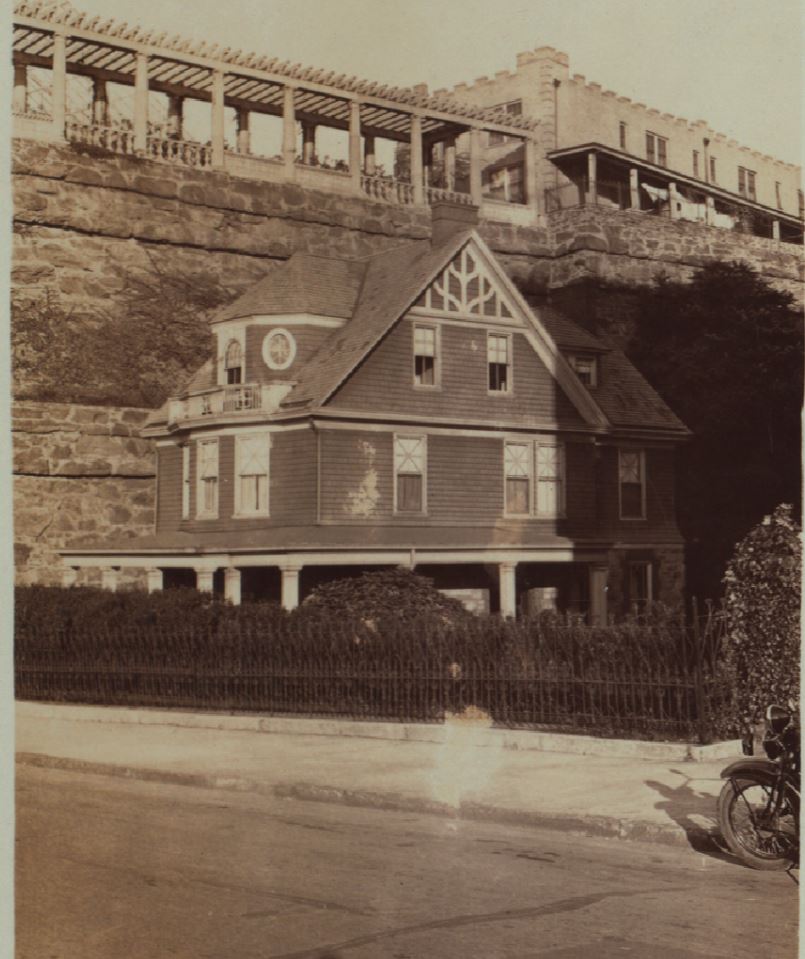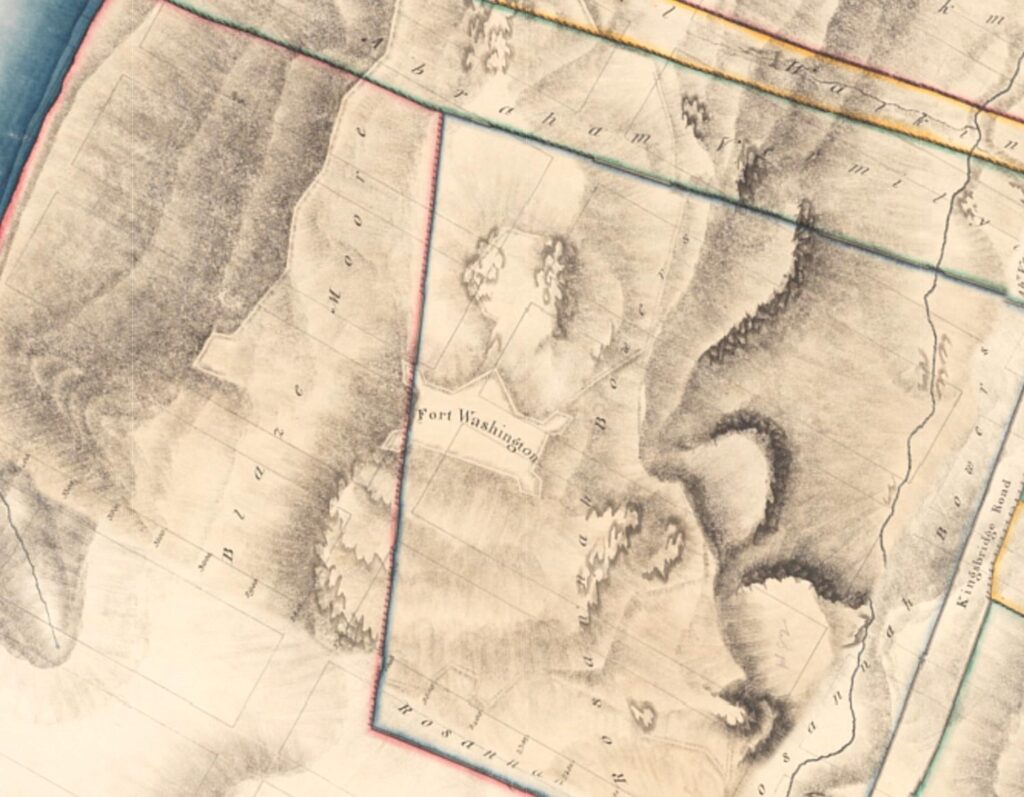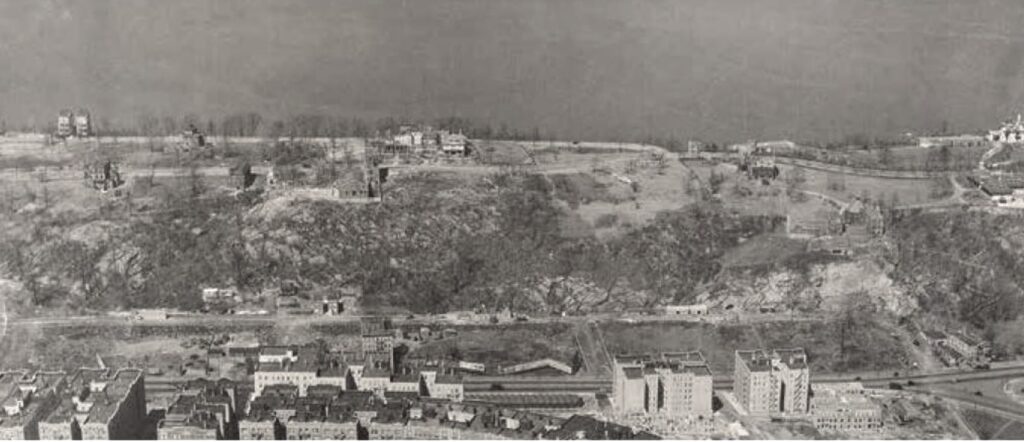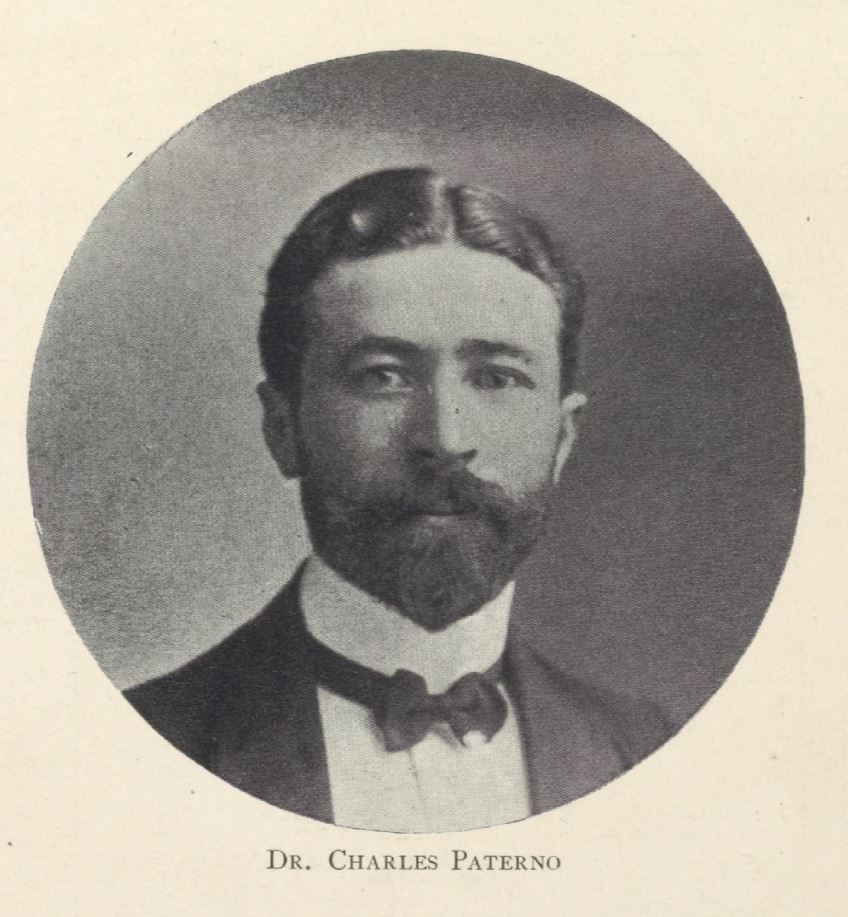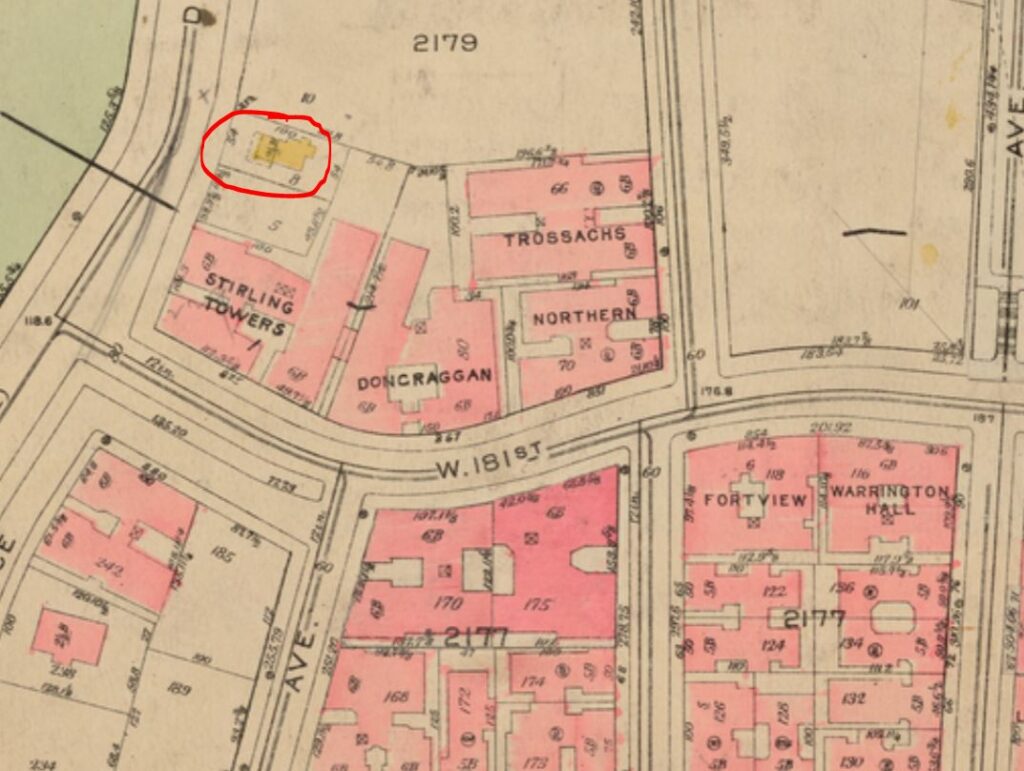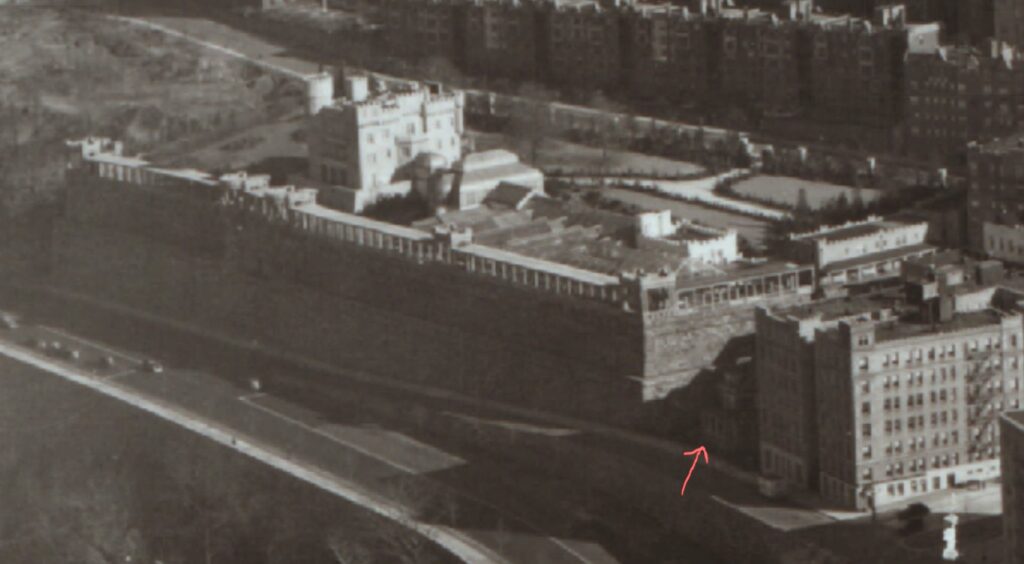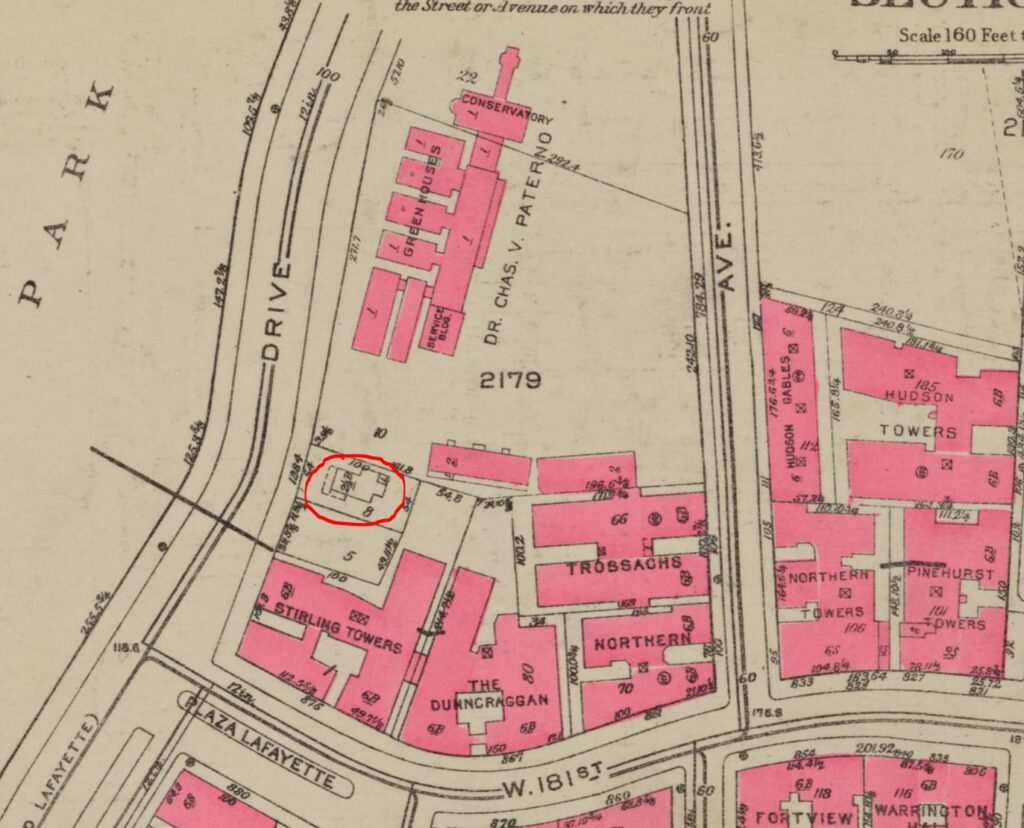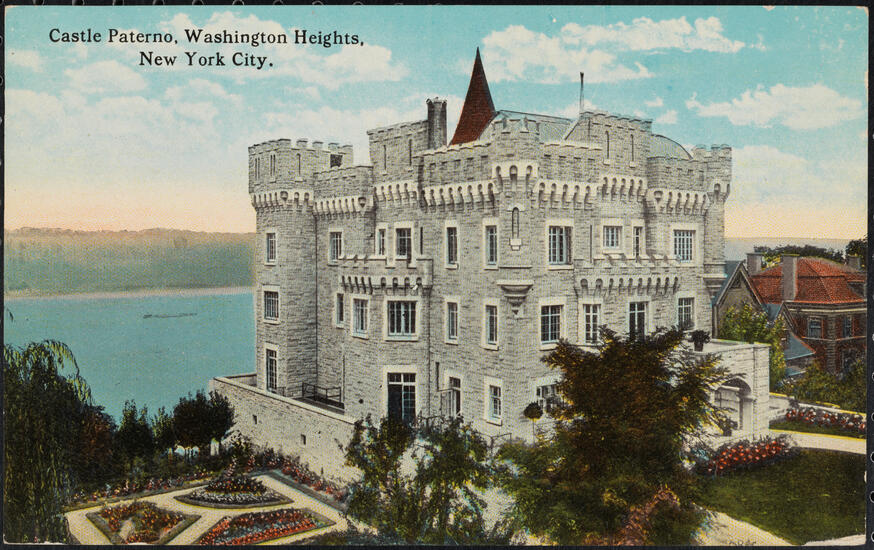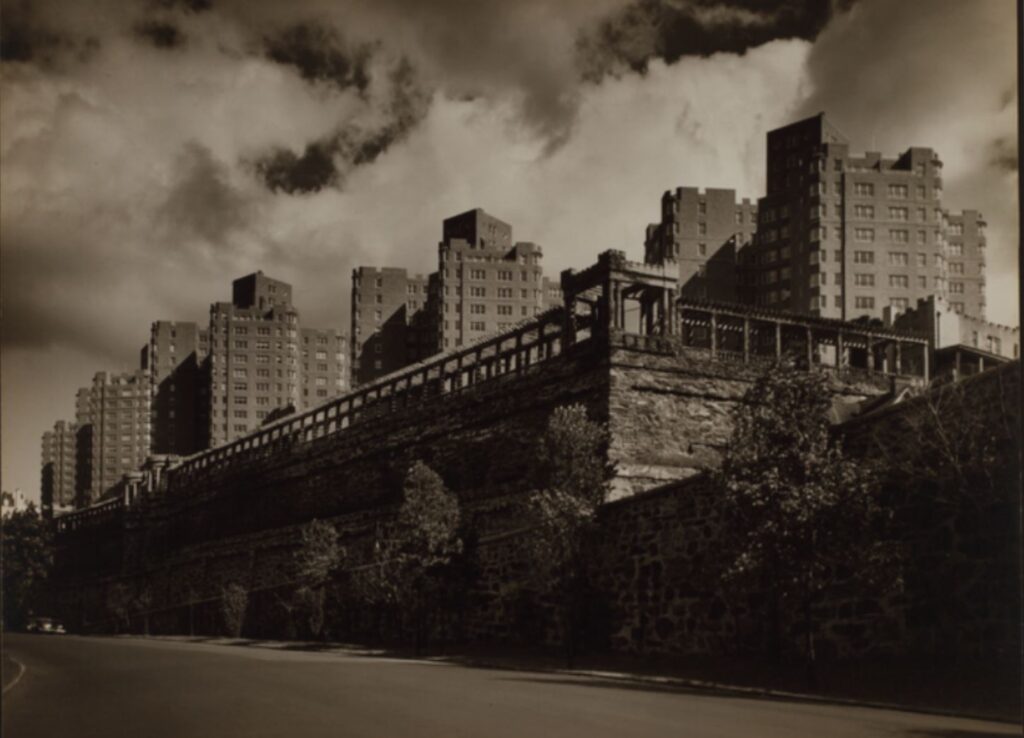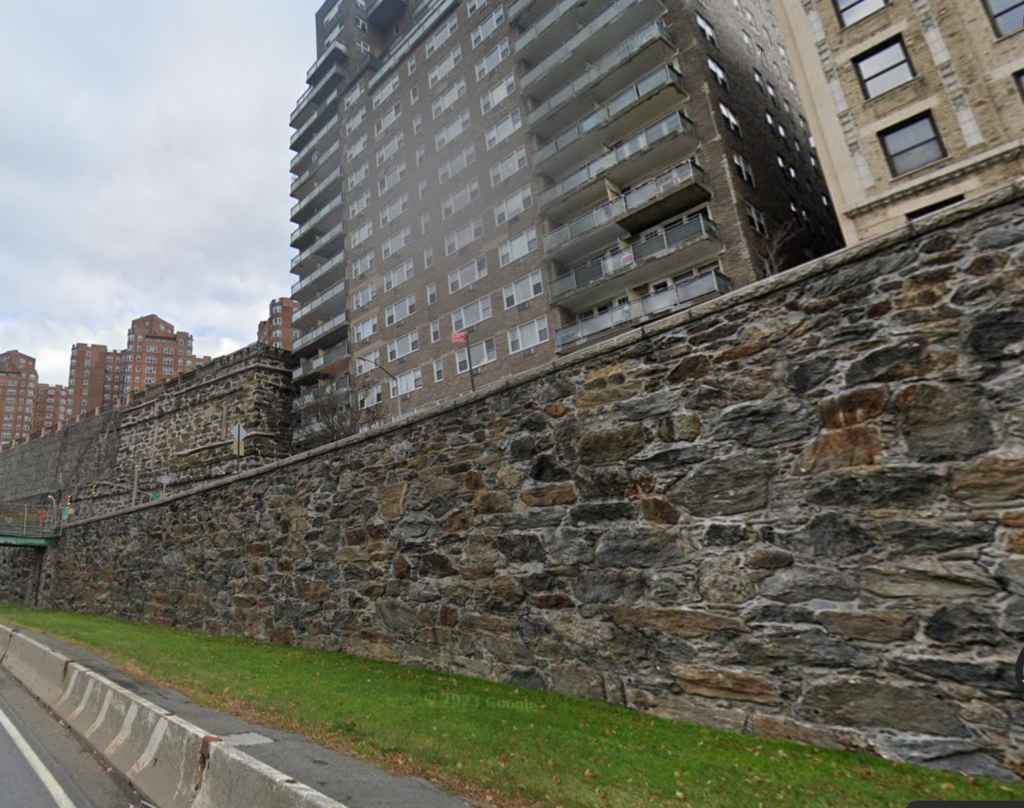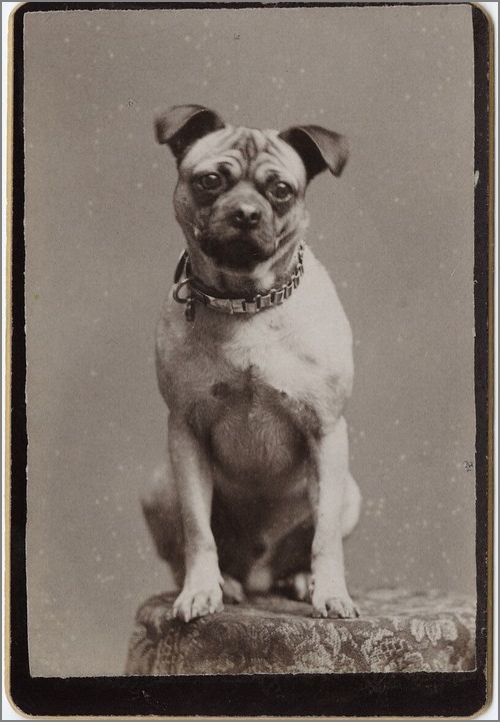
In my last two posts, I wrote about the Army cats of New York City’s Army Building on Whitehall Street and the black cat mascot of the New York Tank Corps. This next story for Military Appreciation Month goes to the military dogs of Governors Island.
During the past 350 years of its recorded history, Governors Island (named in 1784 for “His Majesty’s Governors) has served as a fishing camp and a pasture, a source of timberland, a game preserve, summer resort, garrison, arsenal, and military prison (plans to use the island as an airport never materialized).
For almost 200 years, the island was in continuous military use. From 1821 to 1966, Governors Island was home to the U.S. Army. Several major commands were headquartered at the island, beginning in 1878 with the Military Division of the Atlantic and the Department of the East and ending with the First United States Army.
For 30 years following the Army’s departure, the Coast Guard’s Third Coast Guard District and the Atlantic Area had its headquarters on the island, which made it the largest Coast Guard base in the world. The Coast Guard ceased operations on Governors Island in 1997.
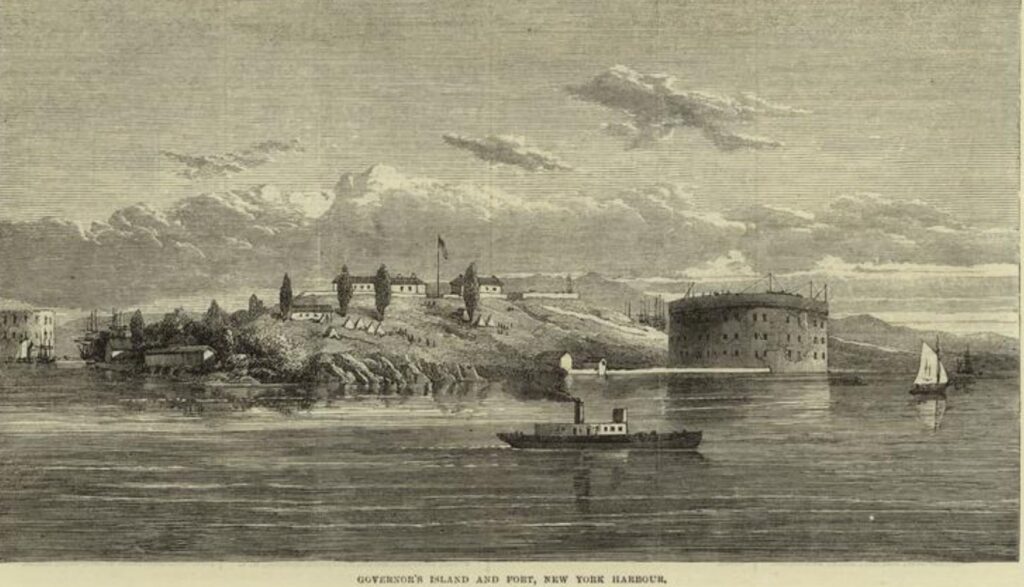
No Unleashed Dogs Allowed!
In 1905, all dogs, military or otherwise, were banished from Governors Island. That included Puglets, the chubby pug who guarded the prisoners at Castle Williams, Blanco, a white dog from Puerto Rico who was reportedly the smartest dog in the army, and all the other dogs who made the island their home. (The dogs weren’t actually banished, but they were prevented to run free, so the army men released the dogs to other posts where they could have their freedom.)

The order that effected the deportation of dogs was issued shortly after General James Franklin Wade, commander of the Division of the Atlantic at Fort Jay on Governors Island, assumed command. According to a news report, the order was issued to help save the 46 white rabbits and 200 tame squirrels on the island (squirrels first arrived on the island in 1895).
Allegedly, the dogs had already killed many rabbits and squirrels, and they were also damaging the lawns and flower gardens.
Prior to the arrival of General Wade, dogs were free to roam the island at will. Dozens if not hundreds of dogs took advantage of the welcoming home.
Major General Henry C. Corbin, who was in command of Governor’s Island before General Wade, was a dog lover. He owned a Scottish collie, and his wife owned a Pomeranian. He didn’t care if the dogs killed the squirrels or damaged the lawns and gardens.
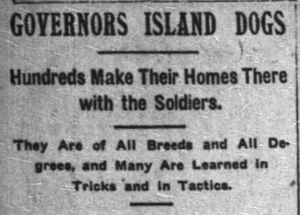
In 1902, a reporter from the New York Times asked Lieutenant Browning, the Adjutant at Governors Island, how many dogs were living on the island. Just as about a dozen dogs scampered past his window, he told the reporter that he could not do the calculations in his head fast enough to provide an accurate answer.
According to Lt. Browning, many of the dogs, such as a lean yellow mutt named Lazarus, swam to the island after deserting from barges or other ships in the Buttermilk Channel. Some dogs hitched a ride to the island on the ferry boat General Hancock, and other dogs were the mascots of the various troops garrisoned on the island. None of the dogs seemed anxious to leave this canine paradise.
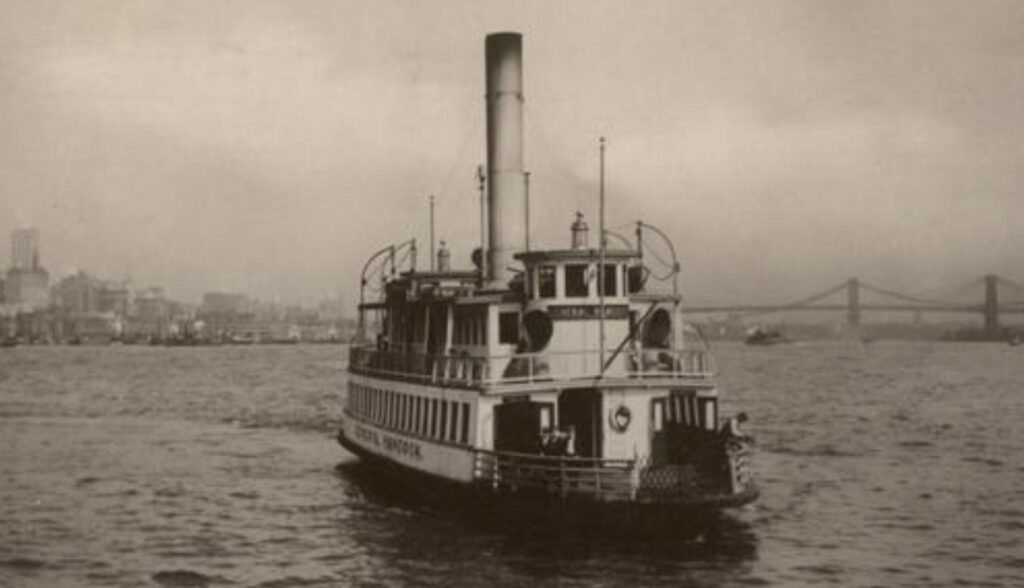
Lt. Browning rattled off the names of dozens of dogs, including a smart fox terrier named Joe who stood at attention and walked a regular post; Skiggety, who was eventually banished to Sandy Hook because he hated the squirrels; Major, a large St. Bernard who came to the island after leaving his home in Brooklyn; Spot, a fox terrier who liked to play leap frog; and Prince, a Scotch collie owned by Quartermaster Sergeant Edmund.
There was also at this time a dog named Skye, was was banished to the Governors Island ferry slip after digging up all the bulbs in Colonel Riley’s flower garden, and Sporty, a dog who was kidnapped from Puerto Rico and refused to sleep on anything but a cot or eat anything but army food. Other favorite dogs on the island included Bob, Billy, Aggie, Dewey, Hobson, Lopez, Weyler, Blanco, and Puglets.
Puglets, the Guard Dog of Castle Williams
One of the most poplar dogs on Governors Island prior to the banishment order was Puglets, a hefty pug with a strong aversion to most cats (more on this later).
Puglets formerly belonged to the wife of Captain Doyle, but after she kicked him from the home for his “unbending animosity” toward her fine cats, he received a life sentence guarding the prisoners at Castle Williams. His new master was Sergeant Martin Way, Supervisor of Military Prisons.
Puglets quickly adapted to his new job and life, and soon he knew everyone and everything that was connected to the prison. He was a great friend to all the incarcerated men–he loved nothing more than being pet by each man as he passed by Sergeant Way’s office.
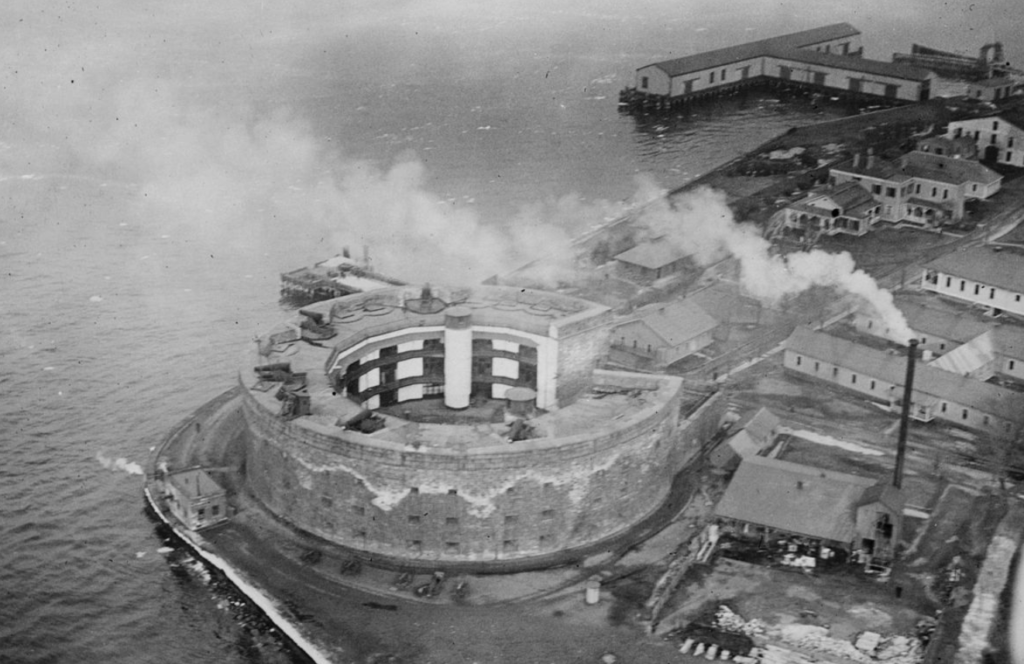
Although Puglets spent most of his day within the prison walls, he was granted daily furlough to roam the grounds and play with his best canine friend, Skiggety (before this dog was exiled to Sandy Hook). His other best friend was a cat named Minnie. Yes, a cat.
Minnie, the Cat of Governors Island
In 1900, Minnie, described as a Maltese cat, was living in a fashionable home in Havana, Cuba. During this time, Havana was governed by U.S. military authorities. That June, an artilleryman slipped her on board a transport and brought her to New York. In other words, Minnie was catnapped.
Minnie did not understand one word of English, but she did make friends with some of the other army cats living on Governors Island. The one mistake she made, though, was spending too much time harassing the squirrels (the army officers had a thing about protecting the squirrels).
Minnie had two choices: leave the island or serve a life sentence in Castle Williams with Puglets. A court-martial was called for, and Sergeant Way was made president of the court. After a day of deliberations, he relegated her to the prison.
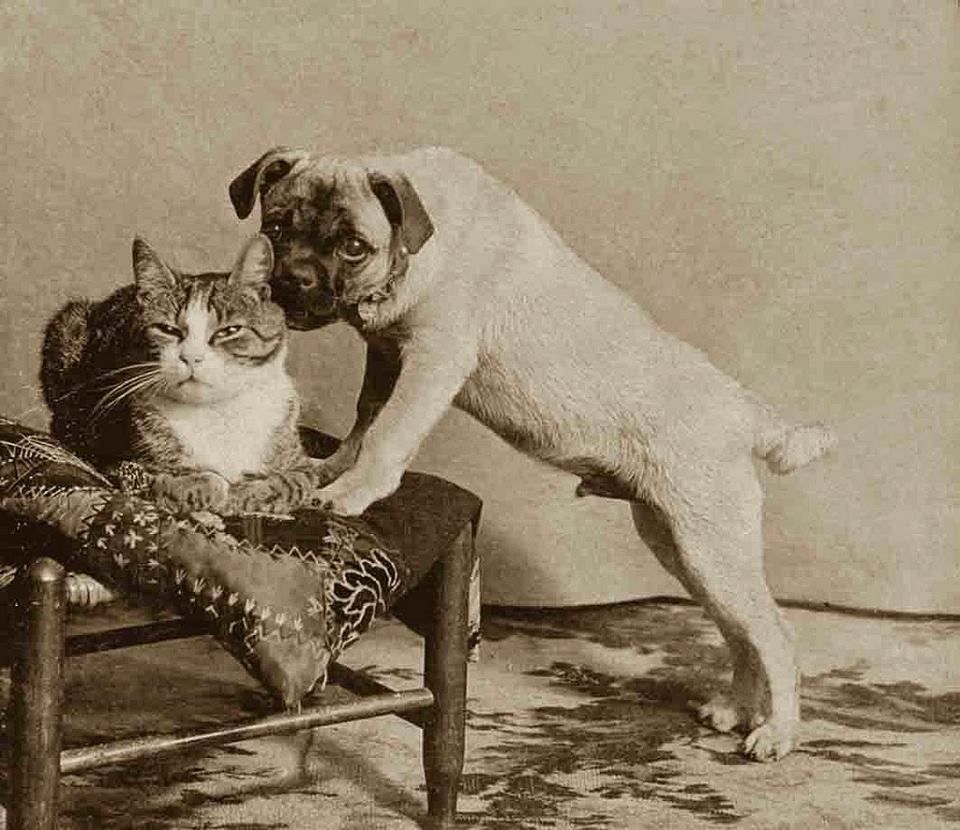
Shortly after she entered the prison, Minnie came across Puglets, who was playing with some of the inmates. Her tail poofed out and the fur on her back bristled up. Soon the cat and dog were rolling on the ground, with Puglets, naturally, getting the worst of the battle scars.
Sergeant Way put an end to the scuttle and the two animals went their separate ways. Minnie and Puglets had a few more fights, but eventually they realized that they were stuck in Castle Williams together and would be better off making the most of the situation.
Over time, the cat and dog became the best of friends. They also had each other’s backs, forming a mutual alliance to protect themselves from any stray dogs and cats that managed to sneak into the prison when the guards were not looking.

Puglets died two years after Minnie’s arrival, in October 1902. A heartbroken Sergeant Way, who was still in mourning for the dog two months later, adopted a parrot named Bob to serve as Puglets’ successor. Bob was a Cuban parrot who arrived at Governors Island with an artilleryman who presented the bird to the sergeant.
On the day of Bob’s arrival, the parrot began yelling out, “Water cure! Water cure!” Sergeant Way handed the bird a container of water. Bob drank greedily for about five minutes and then exclaimed in his parrot voice, “Obliged, you old tin soldier, obliged! No cure now, no cure now, got enough, old tin soldier!”
According to Sergeant Way, within six weeks Bob had learned how to say the names of every prisoner and was able to recite the manual of arms. He was also learning how to chew tobacco.

No More Dogs Allowed!
Over the next 15 years, the rules changed and dogs were once again allowed on the island. However, on August 2, 1928–six days before my late Uncle Bill was born–Major General Hanson E. Ely announced that the fixed quota on Governors Island dogs had been met; therefore, no more new dogs were allowed on the island. Even if a resident dog left or died, he could not be replaced by another.

Under Major General Ely’s orders, every dog on the island had to be listed with the post quartermaster. The quota was set as the total number of dogs on Governors Island as of June 6, 1928.
Not only was there a quota placed on the dogs, but their freedoms were also taken away. No longer could they roam free and move from company to company. Now they would have to wear muzzles and leashes, just as the ordinary dogs on the mainland had to do. If a dog were found loose on the island, its owner would have to report to the post commandant.
In addition to the dog quota, Ely placed a quota on the number of vegetable and flower gardens allowed on the island. He reportedly wanted to make his post the “Spotless Town,” going as far as making his own inspections rather than delegating control to his officers. The news did not make any mention of a quota on squirrels.

Modern-Day Dogs
Today the island is open to the public daily year-round for recreation and events, with ferries operating daily from the Battery Maritime Building. Dogs were not allowed at first, but as of 2022, leashed civilian dogs have been permitted to visit Governors Island with their owners on Saturdays. In addition to these family pets, the Trust for Governors Island has also been “hiring” canine employees to control the island’s goose population since 2015.
Most recently, in December 2023, Atlas, a blue merle border collie, and Reed, a puppy of the same breed, joined two veteran border collie employees (Chip and Aspen) on Governors Island. The four dogs take turns patrolling the grounds to “help control the geese population on the Island and prevent the birds from befouling public areas.”
The modern-day dogs of Governor’s Island have their own Instagram page, where you can check out many pictures of the dogs at play and at work.
